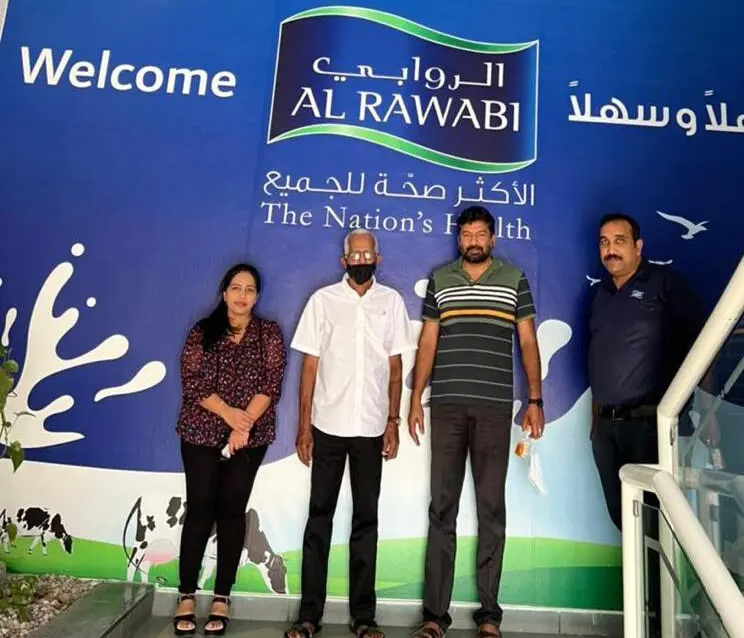Kerala Pravasi Association (KPA) Chairman Rajendran Vellapalath and National Council President, Aswani Nambarambath recently visited the Al Rawabi dairy farm in Al Khawaneej, Dubai.
The visit was to learn and bring to life their vision one of KPA’s ambitious projects of launching a milk farm, with the expertise of governing bodies under the KPA trust.
The new farm, when realized, will be part of the party’s goal in implementing the expertise of expatriates across 36 areas, including agriculture, environment protection, health and wellness, industrial development and manufacturing sectors, aimed to uplift and provide a sustainable livelihood to its beneficiaries.
More than 3,000 workers and 15,000 cows that roam freely in a 400-acre farm, each yielding about 39 liters of milk, it is one of the largest dairy farms, serving more than one million customers per day. The farm is also the nation’s largest animal feeds manufacturers with a fully automated fodder manufacturing unit, a reverse osmosis water treatment plant with ozone and UV filtration systems and allied products for on-farm and off-farm needs.
The success of AlRawabi is a testament to their mission to promote a healthy lifestyle despite tough challenges like temperature control, round-the-clock production units, ensuring top-of-the-class standards and more.
One the other hand, here in India, where dairy plays a significant part in numerous aspects of Indian society, including cuisine, religion, culture, and the economy, we fail to see the same level of commitment and initiative to develop our dairy farms.
Over the years India has transformed from a country of acute milk shortage to the world’s leading milk producer, thanks to the phenomenal success of the Government initiative known as Operation Flood (1970–1996) and their focus on dairy development activities. In that initiative, rural milk shed areas were linked to urban markets through the development of a network of village cooperatives for procuring and marketing milk. And milk production and productivity were enhanced by ensuring the availability of veterinary services, artificial insemination (AI), feed and farmer education and the investment paid off.
However, since then that growth has slumped. The slowdown is attributed to the decline in investment in the dairy sector since the end of the Operation Flood initiative.
Today, milk co-operative societies like Milma ( (a milk co-operative founded by Kerala Co-operative Milk Marketing Federation in 1980), buy milk from independent dairy farmers, without proper standards in place. The quality of the milk varies and these societies pay based on the quality – for instance its fat content, which is likely to become a social security issue in the future.
Another question to ask is, how long will people continue to rear cows in Kerala only because of incentives from the Government? Or if the collaborators choose to stop milk production tomorrow, what will be the state of Kerala’s dairy industry – leaving them to rely on neighboring states of Tamil Nadu or Karnataka or the many unorganized dairy farmers?
KPA, under the KPA trust, has narrowed a suitable location and has proposed a dairy farm project. The party is hopeful that if implemented well, it can be turned into a success.
KPA Chairman, Mr Vellapalath’s father, Mr Balakrishnan Vellapalath will bring on board his expertise and experience having worked at state-run milk co-operatives including Milma for many years.





